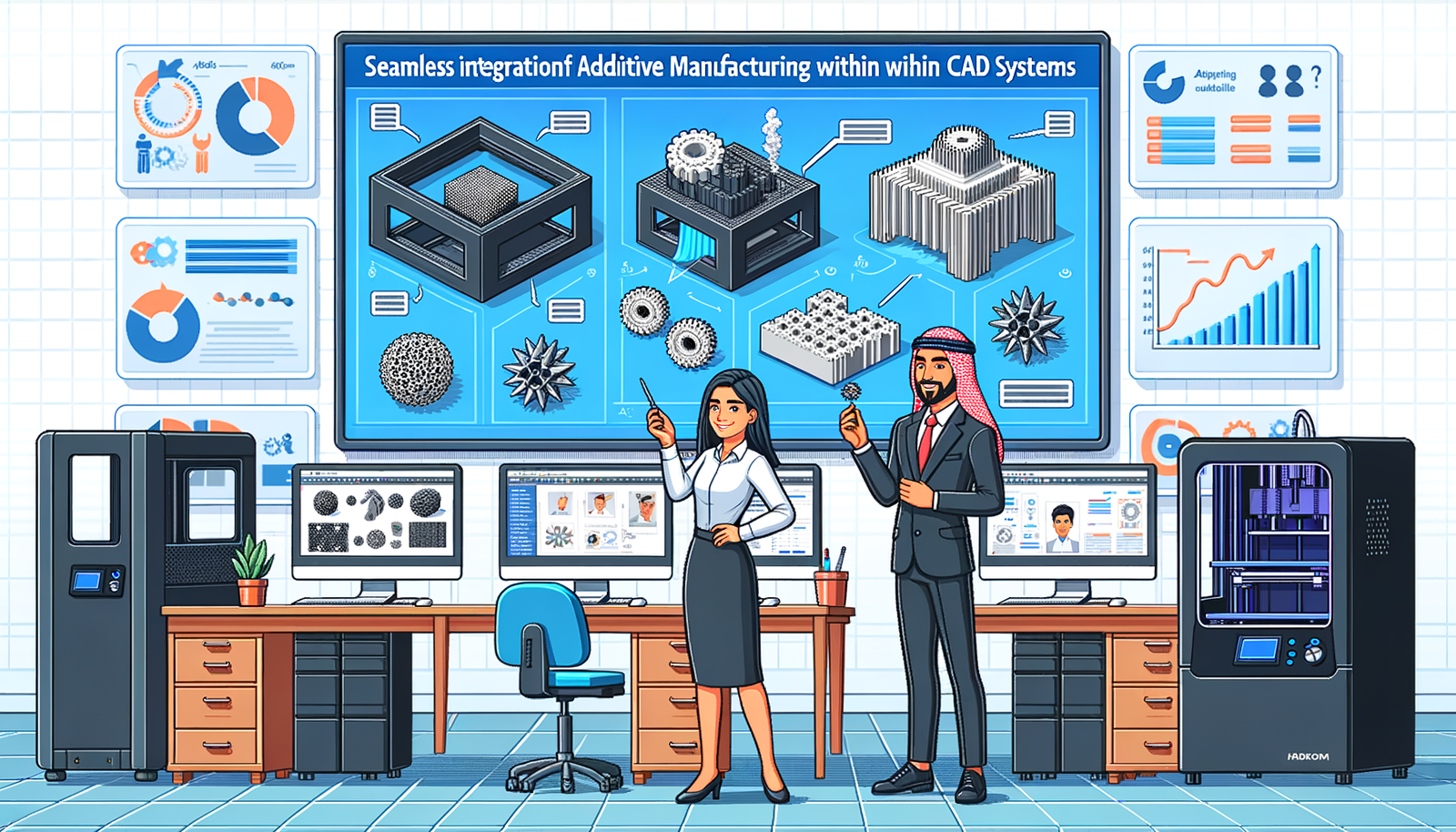Your Cart is Empty
Customer Testimonials
-
"Great customer service. The folks at Novedge were super helpful in navigating a somewhat complicated order including software upgrades and serial numbers in various stages of inactivity. They were friendly and helpful throughout the process.."
Ruben Ruckmark
"Quick & very helpful. We have been using Novedge for years and are very happy with their quick service when we need to make a purchase and excellent support resolving any issues."
Will Woodson
"Scott is the best. He reminds me about subscriptions dates, guides me in the correct direction for updates. He always responds promptly to me. He is literally the reason I continue to work with Novedge and will do so in the future."
Edward Mchugh
"Calvin Lok is “the man”. After my purchase of Sketchup 2021, he called me and provided step-by-step instructions to ease me through difficulties I was having with the setup of my new software."
Mike Borzage
Design Software History: The transformative journey of CAD hardware: from mainframes to tablets in design evolution
October 18, 2024 6 min read


The evolution of CAD hardware has revolutionized the way designers and engineers create, visualize, and manipulate designs. From the massive mainframe computers of the early days to the sleek tablets of today, hardware advancements have significantly enhanced design capabilities and accessibility.
Early CAD Systems and Workstations
The origins of Computer-Aided Design (CAD) are deeply rooted in the technological advancements of the mid-20th century. In the 1950s and 1960s, computing was dominated by large mainframe computers, notably the IBM 7000 series and the Digital Equipment Corporation's (DEC) PDP series. These machines were monumental in both size and significance, serving as the computational backbone for early computational tasks. The IBM 704, part of the 7000 series, was one of the first mass-produced computers equipped to handle high-level programming languages, paving the way for complex computational applications, including primitive design software.
A groundbreaking moment came in 1963 with the work of Ivan Sutherland, a visionary computer scientist. While at MIT, Sutherland developed Sketchpad, often heralded as the ancestor of modern CAD programs. Sketchpad introduced the concept of graphical user interfaces and object-oriented programming. Utilizing a light pen to directly manipulate objects on a display screen, it allowed for the creation and modification of graphical models in a way that was revolutionary for its time. This innovation demonstrated the immense potential of computers in design and engineering fields.
The emergence of specialized hardware was crucial in driving the adoption of CAD in various industries. Companies like Control Data Corporation (CDC) and General Motors were early adopters, recognizing the value of CAD systems in streamlining design processes. In the 1970s, Silicon Graphics, Inc. (SGI) and Sun Microsystems began developing advanced workstations with enhanced graphics capabilities. SGI's workstations, for instance, were renowned for their ability to handle complex 3D graphics, making them a staple in industries that required high-end visualization, such as automotive and aerospace design. The use of these specialized workstations enabled engineers to perform tasks that were previously impossible, such as real-time manipulation of 3D models and running sophisticated simulations.
The role of companies like Lockheed Martin cannot be understated in this era. Lockheed's CADAM (Computer Augmented Design and Manufacturing) system became one of the first commercially successful CAD programs, primarily used in the aerospace industry. It allowed for detailed drafting and design work, significantly reducing the time and cost associated with manual drafting. This period also saw the integration of plotters and early graphics terminals, which facilitated the physical output of designs and allowed for better visualization of complex drawings.
The combination of powerful mainframe computing, pioneering individuals like Ivan Sutherland, and the advent of specialized hardware set the stage for the widespread adoption of CAD systems. It was a time of innovation and rapid development, laying the foundational technologies that would evolve into the sophisticated CAD tools used today.
The Transition to Personal Computers and Advancements in Graphics
The 1980s marked a significant shift with the advent of personal computers like the IBM PC and Apple Macintosh. This era democratized access to CAD software, making it feasible for individual designers and small firms to utilize tools that were once exclusive to large corporations. The IBM PC, with its open architecture, allowed for widespread adoption and third-party development. The Apple Macintosh introduced a user-friendly graphical user interface, making computing more accessible to non-technical users.
This democratization of computing power had profound implications for CAD software. Companies like Autodesk, founded by John Walker in 1982, capitalized on this shift by releasing AutoCAD. AutoCAD was one of the first CAD programs designed to run on personal computers, making CAD tools available to a broader audience. The software's ability to run on relatively inexpensive hardware allowed small businesses and individual professionals to adopt CAD technology without the need for significant investment.
Graphics technology saw substantial advancements with the introduction of dedicated graphics cards. Companies like 3Dfx Interactive with their Voodoo GPUs and NVIDIA, founded in 1993 by Jensen Huang, Chris Malachowsky, and Curtis Priem, revolutionized visual rendering. NVIDIA's GPUs enabled complex visualizations and real-time rendering, which were essential for increasingly sophisticated CAD software. These developments were crucial for popular CAD software during this period, including SolidWorks, founded by Jon Hirschtick in 1993. SolidWorks aimed to create a 3D CAD program that was affordable and user-friendly on Windows-based PCs, challenging established players and making 3D design more accessible.
The transition to personal computers and advancements in graphics technology brought several key benefits:
- Increased Accessibility: CAD tools became available to a wider range of users, breaking down barriers associated with cost and specialized hardware.
- Enhanced Performance: Improvements in CPUs and GPUs allowed for handling more complex models and simulations.
- Software Proliferation: A surge in CAD software options provided users with specialized tools tailored to various industries and applications.
This era not only empowered individual designers but also fostered innovation and competition within the CAD software market. The combination of accessible hardware and advanced software expanded the possibilities in design, allowing for more detailed and precise work.
The Era of Mobility and Tablets
The advent of the 21st century brought about a paradigm shift towards mobility in computing. The introduction of laptop computers provided portability, but it was the emergence of tablet devices that truly transformed mobility in CAD design. Devices like the Wacom tablets offered designers a natural and intuitive way to interact with digital content using styluses that mimicked traditional drawing tools. Wacom, founded in 1983 in Japan, specialized in pen computing and developed technology that provided high levels of precision and pressure sensitivity, essential for detailed design work.
The release of Apple's iPad in 2010 marked a significant milestone. Under the leadership of Steve Jobs, Apple introduced the iPad as a consumer-friendly device that blended the portability of a smartphone with the functionality of a laptop. The iPad's touch interface and later the introduction of the Apple Pencil provided designers with a powerful tool for sketching and modeling on the go. Apps like Procreate and Autodesk SketchBook were optimized for these devices, offering robust features previously reserved for desktop applications.
One of the standout applications in this era is Shapr3D, founded by István Csanády in 2015. Shapr3D is a mobile CAD app specifically designed for the iPad Pro and utilizes the Apple Pencil for intuitive 3D modeling. It leverages the power of Siemens' Parasolid engine, bringing desktop-level functionalities to a portable device. This has enabled designers to create complex models anywhere, significantly enhancing flexibility and efficiency.
The impact of touch interfaces and styluses on design workflows has been substantial. They have enabled designers to sketch, model, and manipulate designs directly on the screen with precision and ease. The ability to quickly capture ideas in the field, collaborate in real-time, and iterate rapidly without the constraints of being tethered to a desktop workstation has transformed design workflows.
Considerations in the mobility era include:
- Portability vs. Performance: Tablets offer mobility but may not match desktops in processing power.
- User Interface Enhancements: Touch and stylus inputs provide a more natural interaction with digital designs.
- Integration with Cloud Computing: Services like Autodesk's Fusion 360 leverage cloud computing to augment the capabilities of mobile devices.
The ongoing relevance of powerful desktop workstations remains, especially for handling complex simulations and large-scale projects. However, the era of mobility and tablets represents a significant evolution in CAD hardware, reflecting the industry's response to the need for flexibility and adaptability in modern design practices.
Conclusion
The history of CAD hardware is a testament to the relentless pursuit of innovation in technology and design. From the colossal mainframes of the 1960s to the sleek tablets of today, each advancement has redefined the boundaries of creativity and efficiency in design processes. The synergy between hardware advancements and software development has been the driving force behind this evolution.
Reflecting on this journey, it's evident that each milestone was not just an incremental improvement but often a paradigm shift. The early work of pioneers like Ivan Sutherland with Sketchpad introduced concepts that were decades ahead of their time. The transition to personal computers made CAD accessible, empowering a new generation of designers and democratizing the field. The rise of companies like Autodesk, SolidWorks, and PTC highlighted the importance of software tailored to harness the capabilities of evolving hardware.
Considering future trends, technologies such as augmented reality glasses and AI-integrated devices hold immense potential. Companies like Magic Leap and Microsoft with its HoloLens are developing headsets that can overlay digital models onto the physical world, providing immersive design experiences. NVIDIA's work with AI and GPUs exemplifies the potential in this area, where hardware accelerated by AI capabilities can handle complex computations and simulations more efficiently.
The ongoing synergy between hardware and software innovations continues to shape the future of design. As technology advances, designers and engineers will benefit from tools that are not only more powerful but also more intuitive and integrated into their workflows. The emphasis will be on enhancing creativity, collaboration, and efficiency, ensuring that technology continues to expand the horizons of what is possible in design.
Also in Design News

Cinema 4D Tip: Mastering Custom Splines for Enhanced Modeling and Animation in Cinema 4D
November 24, 2024 2 min read
Read MoreSubscribe
Sign up to get the latest on sales, new releases and more …




